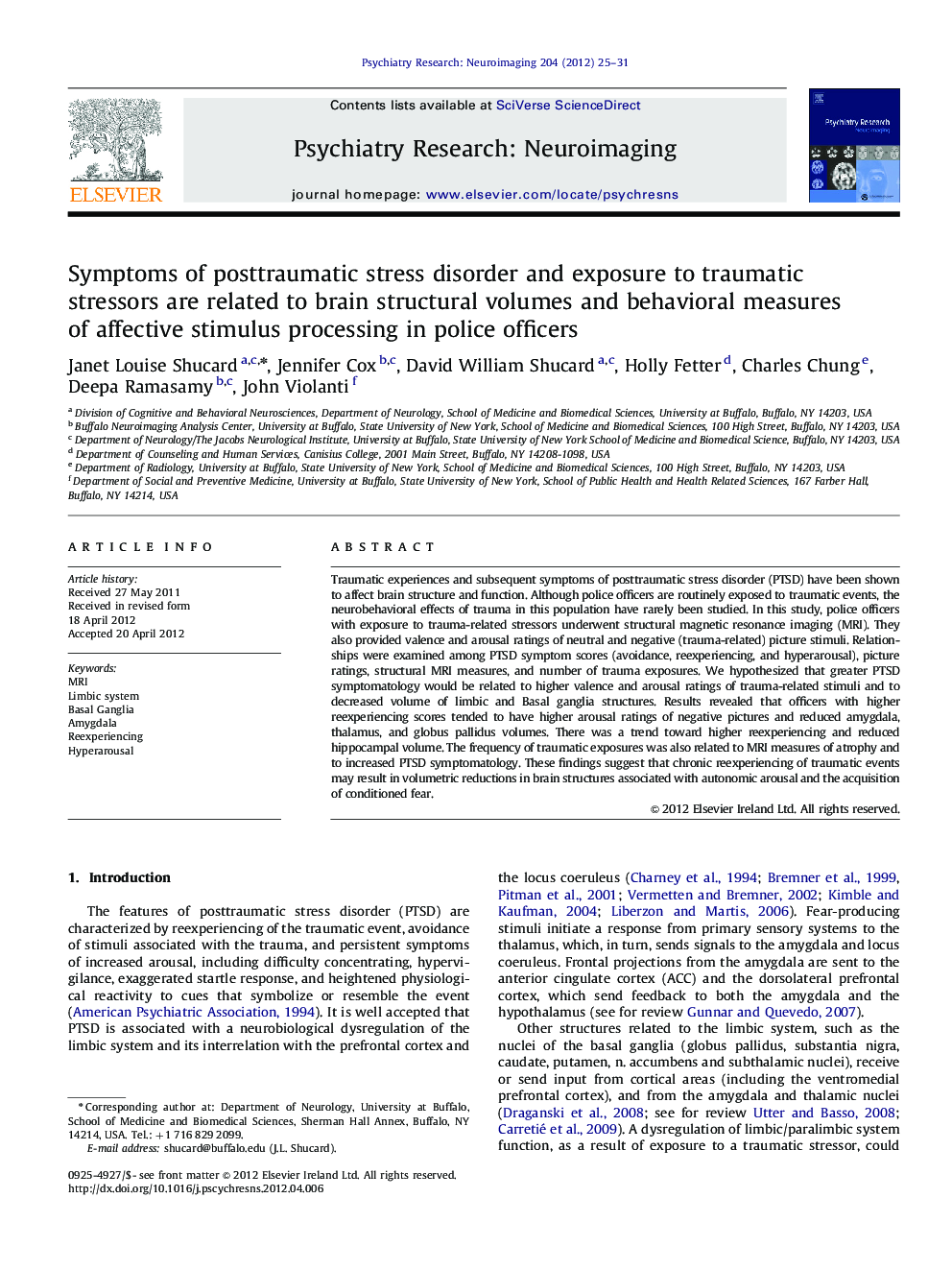| Article ID | Journal | Published Year | Pages | File Type |
|---|---|---|---|---|
| 335661 | Psychiatry Research: Neuroimaging | 2012 | 7 Pages |
Traumatic experiences and subsequent symptoms of posttraumatic stress disorder (PTSD) have been shown to affect brain structure and function. Although police officers are routinely exposed to traumatic events, the neurobehavioral effects of trauma in this population have rarely been studied. In this study, police officers with exposure to trauma-related stressors underwent structural magnetic resonance imaging (MRI). They also provided valence and arousal ratings of neutral and negative (trauma-related) picture stimuli. Relationships were examined among PTSD symptom scores (avoidance, reexperiencing, and hyperarousal), picture ratings, structural MRI measures, and number of trauma exposures. We hypothesized that greater PTSD symptomatology would be related to higher valence and arousal ratings of trauma-related stimuli and to decreased volume of limbic and Basal ganglia structures. Results revealed that officers with higher reexperiencing scores tended to have higher arousal ratings of negative pictures and reduced amygdala, thalamus, and globus pallidus volumes. There was a trend toward higher reexperiencing and reduced hippocampal volume. The frequency of traumatic exposures was also related to MRI measures of atrophy and to increased PTSD symptomatology. These findings suggest that chronic reexperiencing of traumatic events may result in volumetric reductions in brain structures associated with autonomic arousal and the acquisition of conditioned fear.
